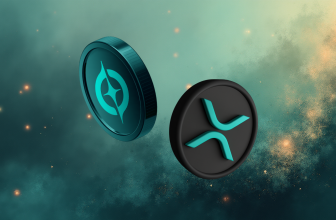
So here’s the big question: with stablecoins booming in 2025, does XRP still matter?
Jake Claver, Managing Director at Digital Ascension Group, says absolutely yes. And honestly, his take makes a lot of sense.
Let’s start with what’s happening in the market. Stablecoins are on fire. Their total market cap just passed $256 billion, and people are using them for way more than trading. We’re talking payments, salaries, remittances, even passive income strategies. Last year alone, stablecoins processed over $27.6 trillion. That’s more than Visa and Mastercard combined. Wild, right?
At the same time, regulation is finally catching up. The GENIUS Act just passed in the U.S. Senate. It basically says big stablecoins have to be backed by real reserves and get audited every year. That kind of oversight is making stablecoins even more appealing to big institutions.
And guess who’s getting involved? Pretty much everyone. Ripple launched its own stablecoin, RLUSD, late last year. It’s already grown past $400 million in market cap and is live on Ethereum and the XRP Ledger. Amazon, Walmart, JPMorgan, PayPal, all of them are exploring or launching their own stablecoins too. It’s a full-on land grab.
DAG Director Jake Claver Explains Why #XRP Will Remain Relevant Despite the Rise of Stablecoins. 🧵🧵🧵 pic.twitter.com/es5MBlYJXf
— TheCryptoBasic (@thecryptobasic) June 18, 2025
So Where Does That Leave XRP?
With all this stablecoin hype, some XRP holders are feeling uneasy. If Ripple now has RLUSD, and all these other companies are launching their own coins, does XRP still have a place?
Jake Claver says yes, and actually, XRP might be more important than ever. His argument boils down to one key idea: trust.
The Real Problem: Nobody Trusts Their Competitors
Think about it. If JPMorgan creates a stablecoin, are Wells Fargo or Citibank going to use it for cross-border payments? Probably not. Same with PayPal, why would a competing bank trust a coin controlled by them?
That’s the problem. Stablecoins are great, but they’re centralized. They’re owned and controlled by someone. And in a competitive banking world, nobody wants to hand over control to a rival.
Right now, banks still use something called Nostro and Vostro accounts to settle global transactions. Basically, they have to hold foreign money in other banks just to keep things moving. That system already ties up around $27 trillion. And Claver warns that if there’s no neutral solution, that number could hit $50 trillion, just sitting there, not doing anything.
Read Also: Kaspa Top Wallets Keep Buying KAS Despite Crash: Here’s What They Know
Why XRP Still Matters
Here’s where XRP comes in. It’s neutral. It’s not controlled by any bank, company, or government. And that’s exactly what makes it so valuable in a world full of competing stablecoins. It can move value across borders without anyone needing to trust each other.
Claver’s point is simple: the more stablecoins flood the market, the more valuable a trustless bridge like XRP becomes. RLUSD and others are great for specific things, but they can’t replace XRP’s role in solving that deeper problem of interoperability.
So no, XRP isn’t going anywhere. In fact, as the stablecoin space gets more crowded and more competitive, XRP’s role as the neutral bridge may actually become more essential.
Claver sees it clearly: in a future where everyone’s building walled gardens, XRP is the one asset that can still connect everything together.
And in a space that’s evolving this fast, that kind of utility might just be XRP’s greatest strength.
Subscribe to our YouTube channel for daily crypto updates, market insights, and expert analysis.








